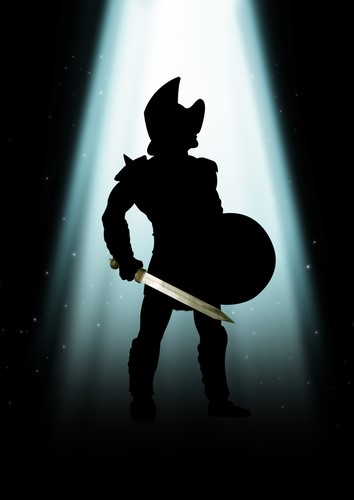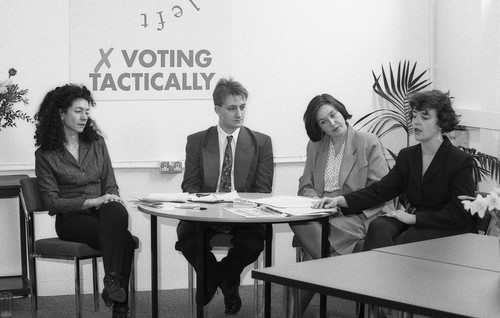Your CHR Couch Potato Guide To The Big Game

Big talking points on RT this year are the Australian CHR (Contemporary Hit Radio) battles. Especially the 3-way in Sydney of course, but efficiencies of network branding mean sooner or later there's an inevitable flow-on to other markets.
Your comments passionately debate the moves, which is all part of the fun.
Top-40/CHR has always been a gladiatorial format for both players, and baying, blood-thirsty spectators alike!
But, this is not about feeding speculation or reviewing individual brands.
Instead, it's to give you a meaningful guide to forming your own assessment of CHR executions.
Breakfast
In CHR you just won't survive without an existing, or potential, high-profile team, and a top imaging producer. You can cut back other areas until it hurts, but never, ever short-change breakfast. Tears and regrets like a country song, lie at the end of that dusty road.
Because it's not just about breakfast, but the total CHR package– see WIGTSOP below.
There's a wealth of info on RT on what makes great shows, like Greg Smith's excellent 12-part Breakfast Show Blueprint
So no point in detail here, except to say it's not always about the age of the presenters, but the age of the content. And the show is like an entertaining, relatable friend you trust to share the high & low emotions of the day.
 Drive
Drive
Has become just as competitive in personality content. But if you had to choose priorities, breakfast wins every time.
And you can at least run a tightly-formatted development show, in the interests of something edgy, fun and different.
CHR listeners are forgiving of "rawness", as long as the content is entertaining, not immature (as in young, crude and silly), and doesn't ramble on at the expense of music. Must be short and to the point because listeners are burnt out on their way home, with a low boredom threshold.
Play The Hits !
Sounds simple enough, but there's a lot more to it.
Traditionally hits are defined as the most popular current songs for 18-34 females, driven by early-adopter 18-24F, with follow-on support from 25-34F. Assessed by some form of music research and sales chart benchmarks.
If you're pulling a CHR brand apart there can be tell-tale signs of format-drift, and vulnerability to new competition. Not only from radio, but any digital entertainment source.
Here are 7 Deadly Sins of CHR Music …
The Sin of Playing To A Sound
One of the most common is allowing a hot genre of the day to dominate. The biggest players are not immune e.g. in the early-90s mainstreaming of Seattle grunge, Z100 New York played wall-to-wall Alternative, and almost sunk in the process.
CHR is ultimately about a variety of song x song clashing genres, which give forward momentum and a workday buffer.
So even if for instance, the charts and research serve up nothing but urban for a period, the skilled Music Director will find ways to compensate with other genres in the recurrents (recent hits) and golds. Because no matter how much hype around it, that genre bubble will burst, and if you haven't been working other genres in the meantime as insurance, you're in deep trouble.
 Shadings of CHR
Shadings of CHR
There may come a point where because of long-term music trends, multiple CHR competitors, and/or the demographic makeup of your market, you're forced to move to a genre-CHR. Or to find a launch beachhead in a crowded market.
The most common sub-category is Rhythmic/Churban with a healthy supply of global urban/hip-hop hits appealing to multi-ethnic audiences. Pop-Alternative another option.
Whatever the shading, the CHR basics still apply, because it's not just about the music.
The Sin Of Playing To A Researched Music Cluster
On the one hand it's sensible to understand the major "bodies of music taste" or "lifegroups", preferred by your target.
These can guide you generally on what type of new hits are more likely to emerge, and how to mix your variety.
On the other, there's a high risk of stagnation and the format-betrayal of creeping conservatism, by not regularly checking the appeal of both existing and new, experimental clusters.
A CHR that filters everything through a music cluster, and won't move on new songs and/or genres without having research validation is a prime candidate for a new competitor positioning themselves as fresher, with new sounds … and the incumbent as a has-been.
The Sin Of Not Testing Other Charts
Goes with the above, and addressed by not using research for risk-minimisation (a waste in CHR), but for innovation, regeneration and growth opportunities.
It's not enough to rely on a mainstream-pop core, when pop-culture can change so quickly, new hybrid genres hatched, and more and more listeners using customised streaming, discovery and recommendation services.
You're not a true CHR if you don't skim off a variety of charts – you're a HotAC!
In Australia you should know how at least the Top-10 of the triple j Hottest 100, tests with your listeners, even if just for Potential scores.
And every week, test the top rankers of dance/club, urban, streaming, iTunes charts etc, anything your listeners are exposed to outside of your format. You never know what you might be missing, that's already emerging, or even a hit (50 metre-penalty for not seeing it coming). Overseas genre charts are a goldmine of new hits because they're already market-tested against large populations.
Hits are universal, and CHR listeners of all ages don't care about genres, only whether it's a good song.
 The Sin Of The Music Committee
The Sin Of The Music Committee
Imagine the scenario, a weekly meeting to decide which new songs to add to the playlist.
It used to take hours of mind-numbing debate about the merits of each song, before the jury solemnly decided what the listeners would hear, and what to be held back or sent to oblivion.
And BTW, the entire previous day was spent by the MD meeting with record company reps to discuss each company's "priorities", and make sure the radio station doesn't stray from the party line, and play something not on the list. Even, heaven forbid, something not yet released here!!! Plus the sideshow of cat-fights over your competitor getting a song first, and "where did triple j get it from?".
Sounds laughable and archaic now … because meanwhile back in the listener's real world of global entertainment access in their pocket, the hits are being made regardless of a station committee.
A CHR execution should be judged on the speed with which the MD is empowered to make 24/7, on the fly playlist decisions, on what's trending globally and get it on … don't wait for the research … now, this second.
The Sin Of Dayparting
This follows on, as the essential creative risk and energy is taken out of the format by burying new edge songs at night. Also a delaying tactic to get record companies off your back, by claiming it as an "add" J.
It's a cop-out, as while night shows can be excellent incubators of new talent and content, magnets for teens, and add to CHR brand values, the hard reality is the main audience will only be exposed to new songs in the daytime.
The true test of a CHR's focus&courage is what they play at 9am. If it's just safe, tested choices, and the interesting&exciting stuff is only on at late afternoon or night, then it's well and truly ripe for the picking.
Which also applies to content and personalities.
 The Sin Of Repetition
The Sin Of Repetition
In the sense of not repeating enough – sorry to disappoint the cynics! Song repetition is the lifeblood of CHR, driving 24/7 instant gratification cume.
Backing off tight rotations (e.g. from 1.5/2.5 hrs) for longer TSL is a mistake, taking the heat and energy out of the brand.
What is needed is a smart MD who doesn't "set & forget", but constantly massages lists & logs to avoid obvious rotation patterns.
There are lots of tricks and tools available, such as moving songs between lists every day e.g. between a really tight Super-Hot and slightly longer Hot. Same with new songs-giving them each a day on a fast track-then back to normal. Daypart separation, varying clocks so the same category of songs doesn't always fall after ad-breaks and content benchmarks, and so on. There's no excuse.
The Sin Of The 25-39 Target
This comes to all CHRs like death&taxes, but the difference is it can be avoided.
The symptoms usually include the fresh, hot launch values being thrown overboard, fewer edge songs, waiting on adds, more dayparting, slower rotations, more recurrents and older gold.
All in the name of broadening the demo target to be more advertiser-friendly.
The sweet irony being the more you modify a CHR for 25-39s the less adult listener and advertiser appeal.
Over-25s use CHR for down-aging, and the young (not teen-there is a difference!), contemporary values and energy, like a Red Bull pick-me-up. Dilute those values and you're yet another AC with no point-of-difference.
Research can show a significant segment of 25-54 women preferring a CHR format vs. a gold-driven AC. They grew up with CHR, and still like to stay in touch. In the past this has also been called the "mother-daughter effect", of teens and their mothers sharing the same hits.
Personally, my view is that now with changing female demographic trends of later child-birth, career-first choices, and single lifestyles there's more to it … CHR is a #1 individual choice – it's all about my-time.
The key is not just the music, but the total package …
Imaging
Feels like stating the obvious, that CHR demands a daily stream of fresh imaging … WTF moments, integration with music, topical events, listeners instead of standard v/o, etc are just a tiny sampling of the infinite possibilities.
 Promotions & Marketing
Promotions & Marketing
Like imaging, a big topic in itself, balancing one-off stimulations, creative client integration, breakfast support, and survey "tent-poles".
Strategic vs. tactical marketing, reworking timeless concepts, and generating the next big thing … all filtered through the brand-values, with social media extensions.
The Whole Is Greater Than The Sum Of the Parts
Applies to all radio formats, but especially critical for CHR to bind all the individual elements together to create that x-factor of a great station. And the real force behind converting a high cume into TSL.
e.g. repetition will stand out like the proverbial, if breakfast under-performs, imaging isn't fresh, or promotions activity is flat. One weakness brings it all down.
The listening-test of the well-executed CHR is whether you don't notice the small moving parts, but get so caught up in the fun, forward momentum and energy rush, that even if you flick around other stations for a change of pace, you always come back for the feel-good dopamine hit.
It's hard work keeping all the plates spinning – CHR is always "on".
The 4 key off-air roles, needing the best people (in no particular order) are Breakfast Producer, Music Director, Image Producer, and Promotions & Marketing Director.
 Do Something Every Day That Scares You!
Do Something Every Day That Scares You!
The essential overlay on everything above, to listen for on CHR, is the level of risk-taking.
All aspects -breakfast/drive content, music, imaging, promotions … playing safe is the biggest risk, when radio's best defence against the fragmentation & globalisation of entertainment is innovation.
The exciting launch phase where you were different, grabbed attention and took on the world is never over, you relaunch every day!
What you want to hear, are moments you know would cause internal debate, and rules being broken.
Creative tension against accepted norms makes great art.
The caveat being, as in any art, you need the discipline and knowledge of the "rules", before you can selectively break them. It's not a task for the complete newbie or the faint-hearted.
Kyle's great CHR skill (not just talent) is knowing what he's pushing against, and how far to stretch boundaries. Love it or hate it, you know about it … it cuts-through … makes the headline …job done!
 The CHR Couch-Potato Takeout
The CHR Couch-Potato Takeout
Imagining and analysing CHR scenarios means understanding both the nuances of the individual parts, and the big picture of how it all comes together for the corporate goals.
Music is a major focus, but at the same time you can't let any of the other elements under-perform either. You can have perfect music, but with no content risk-taking, innovation and x-factor, the battle is lost.
Australian CHR will be a big, tough game in 2015 with 8 Grand Finals. The signs and changes are here now, start packing the esky!
Eriks Celmins is Managing Director of Third Wave Media and InsiderFocus, consultant for research, strategy and content. Find out more here.
Find him on LinkedIn



